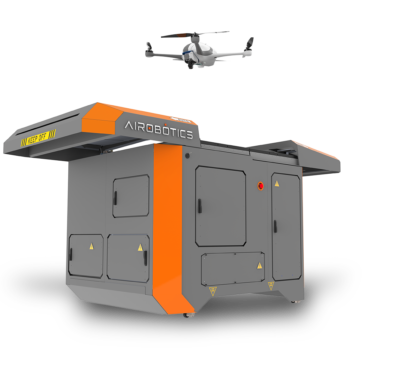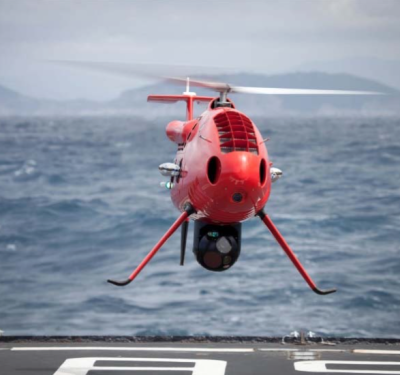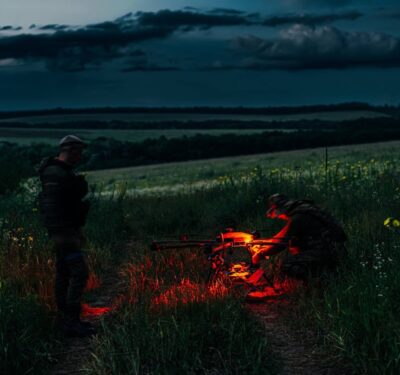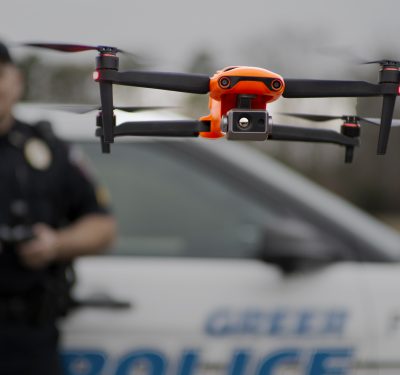Swiss-based Flyability bills its Elios 2 as “collision-tolerant.” That’s a perhaps-understated evaluation for this 15.7 inch drone-in-a-cage, since its “indoor” ruggedness has supported site surveys from dam-related elevator shafts to whether radioactive bars remained 34 years after the nuclear disaster in Chernobyl, Ukraine.
Looking like a “Star Wars” droid, Elios 2 is designed to operate in confined, dark environments. It’s fine in GPS-denied situations, carries side-by-side 4K and thermal cameras, and can produce 2D and 3D Pix4D images, as well as HD livestreams. Its 10,000-lumen lighting system illuminates the shadows.
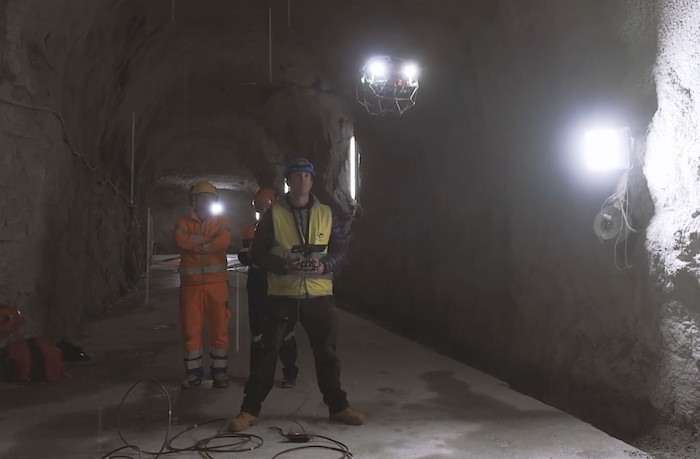
Elios 2 piloted in a tunnel, Grimsel Pass, Switzerland.
About three months ago, on Flyability’s Swiss homefront, Elios 2 safely collected visual data connected to a new dam project in Grimsel Pass. Energy supply company Kraftwerke Oberhasli AG (KWO) needed to appraise a deep pit blasted into the side of a mountain prior to installing an elevator in it. Lowering human inspectors via rope access or crane would have required examining multiple sections sequentially. Instead, Elios 2 was able to start at the bottom and smoothly explore areas requiring assessment. Rather than three or four inspectors spending a week in the dark, Elios 2 safely delivered equivalent work after about two hours of flight time.
“The excellent results delivered by Elios 2 will allow us to plan our next project knowing our crew will be safe,” said Pascal Reber, the civil engineering site manager at KWO.
Revisiting Ground Zero
News of the Grimsel Dam success was paralleled by Flyability’s release of case-study video from a project conducted at a location infamous enough to be known by a single word:
Chernobyl.
On April 26, 1986, a nuclear accident occurred in the No. 4 reactor of the Chernobyl Nuclear Power Plant, in Ukraine, then part of the Soviet Union. A safety test ironically evolved into uncontrolled nuclear reaction, core rupture, fire and radiation contamination. Subsequently confinement structures have been built over the site, and by 2019, Wikipedia estimates, 500,000 people and the equivalent of $68 billion had gone into containment and decontamination. Full cleanup is scheduled for completion—in 2065.
Questions remain nearly 35 years later. The fifth block of the plant had not yet been completed at the time of the disaster and, despite acts of heroism during the plant’s evacuation, there was no record of whether the holding pools in Reactor Five had received or still contained nuclear waste. Consequently, the local decommissioning team asked Flyability last year to determine whether or not nuclear fuel bars were present and if the primary reactor equipment had ever been mounted.
On a break from a corporate training in the south of France, Charles Rey, Flyability training manager and a mission leader, recalled the effort.
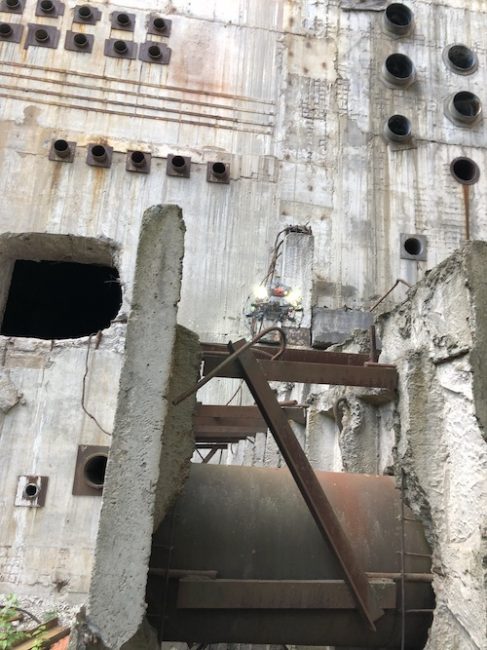
Elios 2 “climbs” a 230-foot retaining wall to examine Reactor No. 5 at Chernobyl.
“Our local partner, DroneUA, called to ask if we could do an inspection for them, because they needed pictures and videos to show some areas of unit No. 5. They were pretty sure that there were no combustibles but they needed to prove it.”
Using Elios 2 there, “the advantage is to remove the danger to humans,” Rey recalled. “Because the other way to inspect would be to send rope-access people, and that would force them to climb in the facility, which is really not safe.”
On arrival, the Flyability team was briefed on site etiquette. “We did not sit on the ground, never touched something on the ground, and had no drink or food on the site.” Radiation sensors were distributed.
“We started by flying from outside to this big pumping room, to see if it was safe to work there,” Rey recalled. Once inside, other risks presented themselves. “It was way, way too dangerous to walk close to these openings, because they stopped building the facility when it was at 70-75 percent. It was kind of spooky, as it was a Cold War thing with a weird feeling. All the testing material for radioactivity was, like, 35 years old.”
Unassisted human observation was inadequate. “Lead plates that were supposed to shield the rest of the facility had been sitting there when they abandoned in just one day. We knew that the small corridors were more or less safe because they’re concrete, but in the big room, there was no way to check if the roof was rusted and would fall on us.
“Normally, the technology then was to have a huge kind of pit,” Rey continued. “We were at the base.” Consequently, the team drew on Elios 2’s track record of nuclear plant inspection.
Standing in the 80-foot deep pit, the team flew over a 230-foot wall to examine the reactor area. Elios 2’s ability to function without GPS made this possible “The [2.4 gigahertz radio] signal bounced on the ceiling, in metal” Rey said, “and went straight to the drone, and we had a perfect signal.”
The team worked for about 90 minutes, including about 30 minutes of flight time, and was able to collect images and video to verify that the cooling pools were empty and the area was free of nuclear waste. This data would inform future efforts by local and international authorities.
Current Applications
Elios 2 upgrades over its Elios 1 predecessor include seven pairs of sensors for improved stability. It also has its camera outside the cage. Rey explained why: “it’s actually much easier now, because you don’t have the reflection of your light in the cage that we had before.”
Those sensors make Elios even more maneuverable in constrained spaces. Yet Rey praised the “just-in-case” redundancy the cage can provide. “I did a 3D model in a tunnel in Italy two weeks ago,” he recalled. “I was walking at the same time I was piloting—it’s probably not a good idea to do so. I was a bit distracted, and the drone hit one of the walls of the tunnel at full speed. We broke one pentagon of the cage—that’s all.”
Before we signed off, Rey’s thoughts returned to the signs of life he saw outside the ruined Chernobyl reactor. “There are about 100 wild horses on the site. There are dogs, still living and sleeping on the floor—all tagged to study the effects of radioactivity. There’s a very well-known fox.
“It’s coming back.”
Photo credit: Flyability


